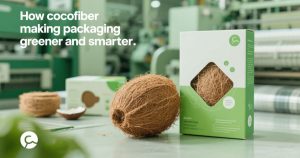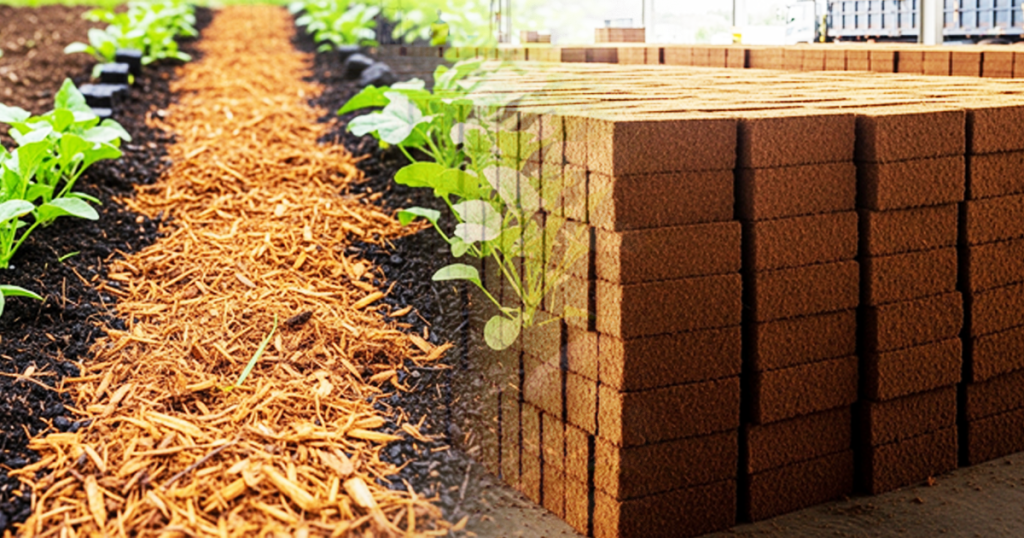The Rise of Bio-Based Agriculture in the Face of Sustainability Challenges
As a researcher in sustainable growing media, I have witnessed the agricultural sector evolve rapidly under the pressure of climate change, environmental degradation, and soil depletion. The global pivot toward bio-based agriculture is no longer just a trend it’s a necessity.
Amid this transformation, one organic material is emerging as a key player: cocopeat bricks. Cocopeat, derived from the husk of coconuts, is reshaping the way we think about plant substrates.
Compressed into easy-to-transport bricks, cocopeat is not just an environmentally friendly byproduct; it is a versatile, cost-efficient, and highly effective growing medium. Its emergence is helping farmers, horticulturists, and agropreneurs meet the growing demand for sustainable farming practices.
In the context of regenerative agriculture, cocopeat bricks provide an ideal foundation. They are biodegradable, pH neutral, and naturally resistant to pathogens. In drought-prone areas, their exceptional water retention capability offers a lifeline, reducing the frequency of irrigation without sacrificing plant health.
What Makes Cocopeat Bricks So Effective?
Superior Water Management
One of the most remarkable properties of cocopeat bricks is their water-holding capacity. When hydrated, these bricks expand to several times their original volume, forming a light, porous substrate that retains moisture effectively while maintaining proper aeration.
This characteristic makes them particularly valuable in arid and semi-arid regions where water conservation is critical. Unlike traditional soil, which can become compacted over time and hinder root development, cocopeat maintains its structure.
This enables roots to grow freely and absorb nutrients more efficiently. As a result, crop yields improve, and the risk of plant stress diminishes.
Soil Health Enhancement
Beyond water management, cocopeat bricks contribute positively to soil structure and microbial activity. When used as a soil amendment, cocopeat enhances aeration and facilitates microbial proliferation both essential for healthy root zones.
Furthermore, its low electrical conductivity ensures that salt build-up is minimized, especially crucial in greenhouse cultivation and hydroponics.
My own laboratory trials have shown that cocopeat-amended soils exhibit increased root biomass and improved nutrient uptake, particularly in leafy greens and fruiting vegetables.
Its natural lignin content also encourages slow decomposition, enriching soil over time without immediate nutrient loss.
Environmental and Economic Impact
A Renewable Alternative to Peat Moss
Peat moss, long valued in horticulture, has come under scrutiny for its environmental cost. Extracting peat disrupts delicate wetland ecosystems and releases significant amounts of stored carbon into the atmosphere.
Cocopeat bricks offer a renewable, ethical alternative. They repurpose what was once considered agricultural waste into a resource that supports circular economy principles.
From an economic standpoint, cocopeat production is already stimulating new agro-industrial value chains in coconut-producing countries like India, Indonesia, Sri Lanka, and the Philippines.
Farmers and cooperatives now have opportunities to generate additional income by processing and exporting cocopeat bricks.
Reduced Input Costs for Farmers
For farmers, the switch to cocopeat bricks can also mean reduced fertilizer and irrigation costs. Because cocopeat retains moisture and nutrients longer, it allows for more efficient input usage.
Additionally, its reusability after proper sterilization adds to its value proposition. In controlled environments like greenhouses, cocopeat has proven to be one of the most consistent and reliable growing media available.
Looking Ahead: The Role of Research and Innovation
The role of research in the evolution of cocopeat bricks cannot be overstated. Ongoing studies are examining ways to enhance its performance further, including blending with biochar, compost, or microbial inoculants to optimize nutrient profiles and suppress diseases.
Some researchers are also investigating the use of nanotechnology to improve the physical properties of cocopeat substrates. Moreover, smart agriculture solutions are beginning to incorporate cocopeat as a standard medium in automated hydroponic and aeroponic systems.
As sensor technology becomes more accessible, it enables precise monitoring of moisture and nutrient levels in cocopeat-based substrates paving the way for data-driven cultivation methods.







